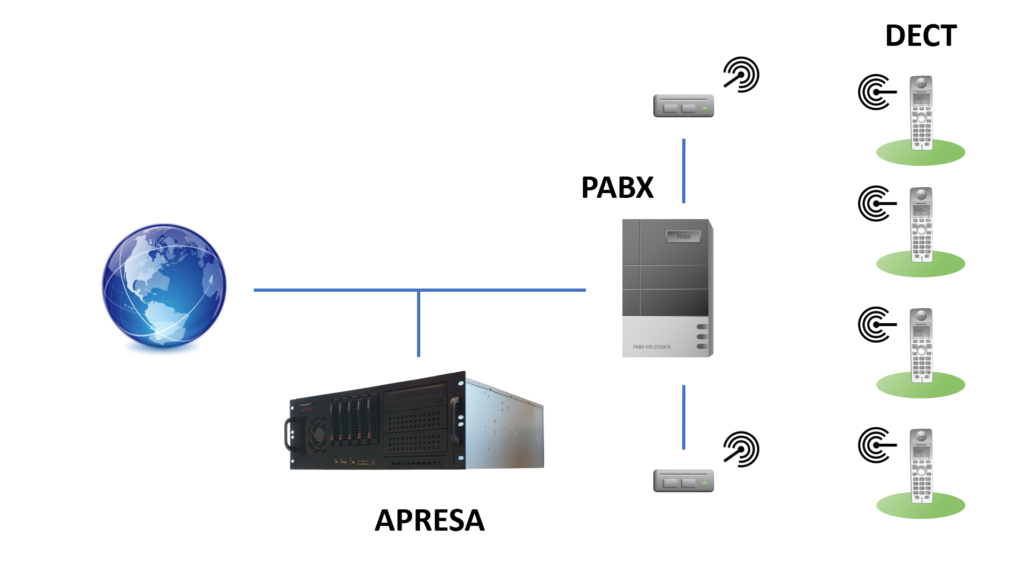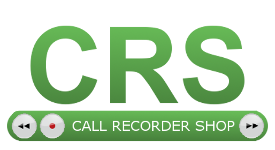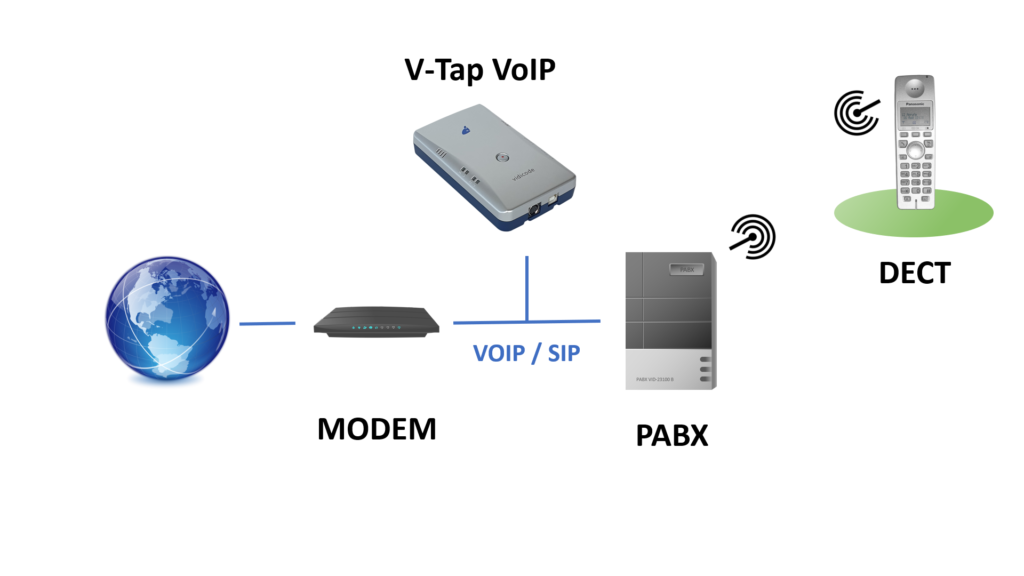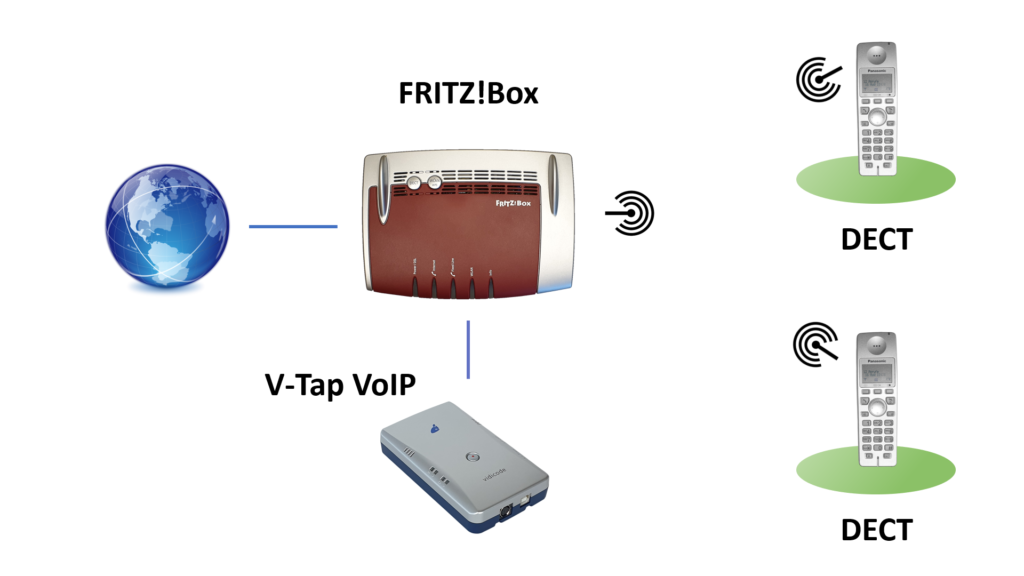Recording calls is relatively easy when you have an actual line to connect to. But how to solve a recording demand when the phones are wireless DECT phones?
DECT phones are used in various setups and each of those setups requires a different approach to make it possible to record:
DECT phones connected to an analog base-station
This setup is normally found in private homes. An analog line connection on the provider’s modem is used to connect a DECT base station. The solution to record is to connect a V-Tap Analog (or another Vidicode analog recorder) in-between the line.
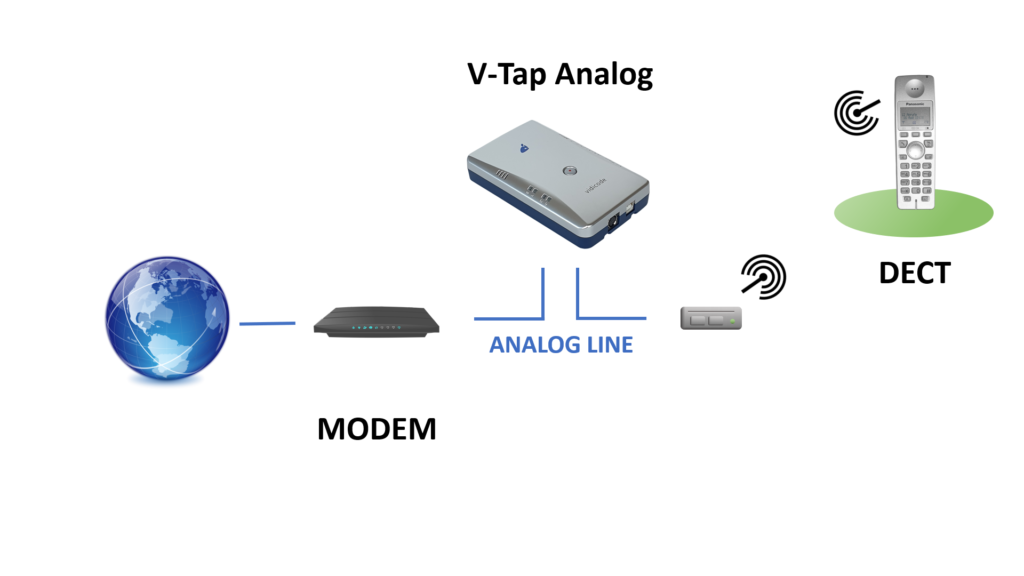
DECT phone(s) and VoIP
When you want to record DECT phones in a VoIP setup, the call recorder V-Tap VoIP is a good choice. The recorder is connected between your modem and the DECT base station.
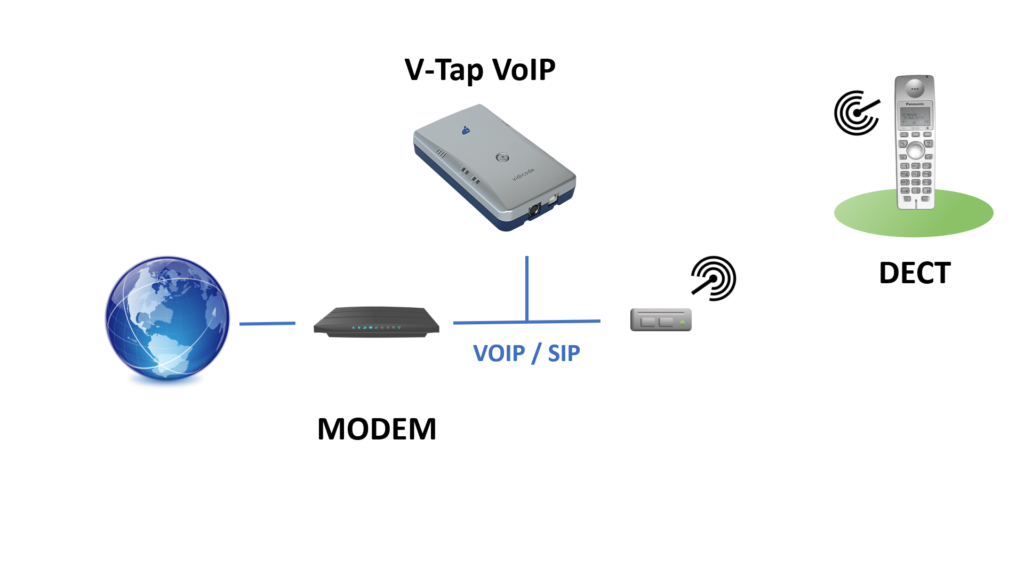
DECT phone(s) connected to a PBX
In this situation (usually found in a small business setup or SOHO) a small PBX is connected to the provider’s modem via a VoIP/SIP connection. A small PBX like that can usually handle multiple DECT phones. In this case a good way to record is to connect a recorder (like our V-Tap VoIP) in-between the modem and the PBX.
DECT phone(s) connected to a Fritz!Box®
The Fritz!Box® is a special modem / PBX combination in one box. There are no external VoIP or analog lines where you can connect a recorder to. Our Vidicode V-Tap VoIP + Proxy however can use a special technology to route the calls via the recorder. This option is available especially for systems like the Fritz!Box®.
Note: V-Tap VoIP + Proxy is a V-Tap VoIP with an included Proxy license.
DECT phone(s) connected to a larger PBX system
In larger companies the DECT phones used are normally connected to the PBX via multiple DECT send/receivers in the building. Recording them requires a recorder to be connected to the trunk lines of the PBX or connected via an active recording protocol like CSTA. Our APRESA recorder can be used in this way and is able to record from various PBX platforms.
